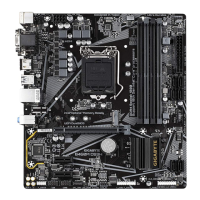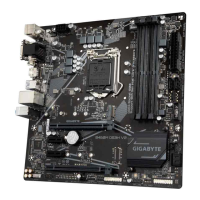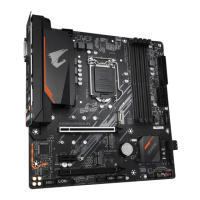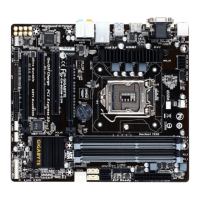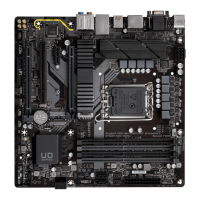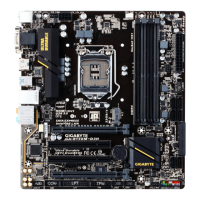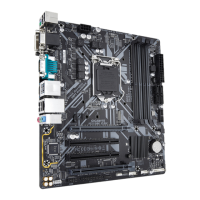Please visit GIGABYTE's website for details on conguring a RAID array.
C-1. Using EZ RAID
GIGABYTE motherboards provide you with the EZ RAID feature, allowing you to quickly congure a RAID
array with simplied steps.
Steps:
1. After restarting the computer, enter the BIOS Setup and go to Settings\EZ RAID. Press <Enter> on the EZ
RAID item. Select the type of hard drives you use for RAID in the Type tab and then press <Enter>.
2. Go to the Mode tab to select a RAID level. RAID levels supported include RAID 0, RAID 1, RAID 10, and RAID 5
(the selections available depend on the number of the hard drives being installed). Then press <Enter> to
move to the Create tab. Click Proceed to begin.
3. After completing, you'll be brought back to the Intel(R) Rapid Storage Technology screen. Under RAID
Volumes you can see the new RAID volume. To see more detailed information, press <Enter> on the volume
to check for information on RAID level, stripe block size, array name, and array capacity, etc.
C-3.ConguringLegacyRAIDROM
You'll need a discrete graphics card to enter the legacy RAID ROM utility. Enter the Intel
®
legacy RAID BIOS
setup utility to congure a RAID array. Skip this step and proceed with the installation of Windows operating
system for a non-RAID conguration.
Steps:
1. In BIOS Setup, go to BIOS and set CSM Support to Enabled and StorageBootOptionControl to Legacy.
Next, go to Settings\IOPorts\SATAAndRSTConguration and make sure UseRSTLegacyOROM is
set to Enabled. Save the changes and exit BIOS Setup. After the POST memory test begins and before the
operating system boot begins, look for a message which says "Press <Ctrl-I> to enter Conguration Utility".
Press <Ctrl> + <I> to enter the RAID Conguration Utility.
2. After you press <Ctrl> + <I>, the MAIN MENU screen will appear. If you want to create a RAID array, select
Create RAID Volume in MAIN MENU and press <Enter>.
C-2.UEFIRAIDConguration
Steps:
1. In BIOS Setup, go to Boot and set CSM Support to Disabled. Save the changes and exit BIOS Setup.
2. After the system reboot, enter BIOS Setup again. Then enter the Settings\IOPorts\Intel(R)RapidStorage
Technology sub-menu.
3. On the Intel(R) Rapid Storage Technology menu, press <Enter> on Create RAID Volume to enter the Create
RAID Volume screen. Enter a volume name with 1~16 letters (letters cannot be special characters) under the
Name item and press <Enter>. Then, select a RAID level. RAID levels supported include RAID 0, RAID 1,
RAID 10, and RAID 5 (the selections available depend on the number of the hard drives being installed).
Next, use the down arrow key to move to Select Disks.
4. Under Select Disks item, select the hard drives to be included in the RAID array. Press the <Space> key
on the hard drives to be selected (selected hard drives are marked with "X"). Then set the stripe block size.
The stripe block size can be set from 4 KB to 128 KB. Once you have selected the stripe block size, set the
volume capacity.
5. After setting the capacity, move to Create Volume and press <Enter> to begin.
6. After completing, you'll be brought back to the Intel(R) Rapid Storage Technology screen. Under RAID
Volumes you can see the new RAID volume. To see more detailed information, press <Enter> on the volume
to check for information on RAID level, stripe block size, array name, and array capacity, etc.
- 40 -
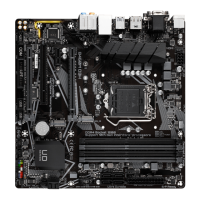
